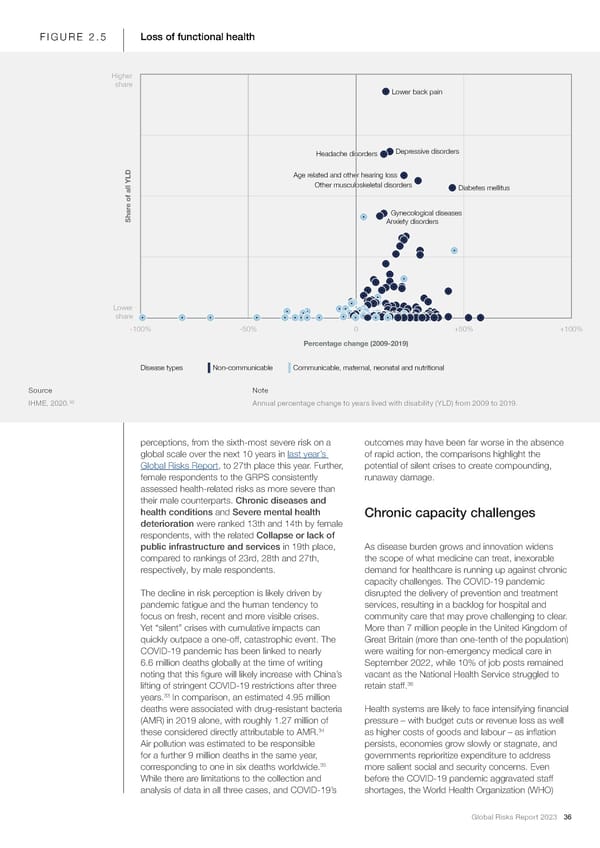FIGURE 2.5 Loss of functional health Higher share Lower back pain Headache disorders Depressive disorders Headache disorders Age rAge related and other hearing losselated and other hearing loss Other musculoskeletal disorOther musculoskeletal disordersders Diabetes mellitusDiabetes mellitus e of all YLD Gynecological diseases Shar Anxiety disorders Lower share -100% -50% 0 +50% +100% Percentage change (2009-2019) Disease types Non-communicable Communicable, maternal, neonatal and nutritional Source Note IHME, 2020.32 Annual percentage change to years lived with disability (YLD) from 2009 to 2019. perceptions, from the sixth-most severe risk on a outcomes may have been far worse in the absence global scale over the next 10 years in last year’s of rapid action, the comparisons highlight the Global Risks Report, to 27th place this year. Further, potential of silent crises to create compounding, female respondents to the GRPS consistently runaway damage. assessed health-related risks as more severe than their male counterparts. Chronic diseases and health conditions and Severe mental health Chronic capacity challenges deterioration were ranked 13th and 14th by female respondents, with the related Collapse or lack of public infrastructure and services in 19th place, As disease burden grows and innovation widens compared to rankings of 23rd, 28th and 27th, the scope of what medicine can treat, inexorable respectively, by male respondents. demand for healthcare is running up against chronic capacity challenges. The COVID-19 pandemic The decline in risk perception is likely driven by disrupted the delivery of prevention and treatment pandemic fatigue and the human tendency to services, resulting in a backlog for hospital and focus on fresh, recent and more visible crises. community care that may prove challenging to clear. Yet “silent” crises with cumulative impacts can More than 7 million people in the United Kingdom of quickly outpace a one-off, catastrophic event. The Great Britain (more than one-tenth of the population) COVID-19 pandemic has been linked to nearly were waiting for non-emergency medical care in 6.6 million deaths globally at the time of writing September 2022, while 10% of job posts remained noting that this 昀椀gure will likely increase with China’s vacant as the National Health Service struggled to 36 lifting of stringent COVID-19 restrictions after three retain staff. 33 years. In comparison, an estimated 4.95 million deaths were associated with drug-resistant bacteria Health systems are likely to face intensifying 昀椀nancial (AMR) in 2019 alone, with roughly 1.27 million of pressure – with budget cuts or revenue loss as well 34 these considered directly attributable to AMR. as higher costs of goods and labour – as in昀氀ation Air pollution was estimated to be responsible persists, economies grow slowly or stagnate, and for a further 9 million deaths in the same year, governments reprioritize expenditure to address 35 corresponding to one in six deaths worldwide. more salient social and security concerns. Even While there are limitations to the collection and before the COVID-19 pandemic aggravated staff analysis of data in all three cases, and COVID-19’s shortages, the World Health Organization (WHO) Global Risks Report 2023 36
 2023 | Global Risks Report Page 35 Page 37
2023 | Global Risks Report Page 35 Page 37